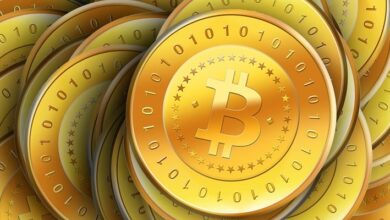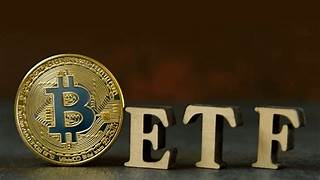Faster, Cheaper, Safer? Tokenized Deposits vs Stablecoins

The world of finance is undergoing a digital revolution, and two key players are emerging: tokenized deposits and stablecoins. Both aim to represent value digitally, but they operate in very different ways. Let’s dive in and understand what separates these financial innovations, Tokenized Deposits vs Stablecoins.
Key Differences
1. Backing:
Tokenized deposits are backed by actual fiat currency reserves held in regulated banks, while stablecoins can be backed by various types of reserves, including fiat currencies, commodities, or cryptocurrencies.
2. Issuance:
Tokenized deposits are issued by regulated financial institutions, while stablecoins can be issued by centralized entities or decentralized protocols.
3. Regulation:
Tokenized deposits are subject to traditional banking regulations, while stablecoins operate in a largely unregulated space, although increasing regulatory scrutiny is expected.
4. Transparency:
Tokenized deposits typically have higher transparency regarding their reserves and auditing processes, while the transparency of stablecoin reserves varies depending on the issuer.
5. Use Cases:
Tokenized deposits are primarily used for tokenizing traditional financial instruments and services, while stablecoins have broader use cases in decentralized finance (DeFi), remittances, and as a means of exchange in cryptocurrency ecosystems.
Defining the Digital Dollars
- Tokenized Deposits: Imagine your bank account, but with a twist. A tokenized deposit is a digital token representing your actual money held at a bank. It’s like a tradable, digital receipt for your cash, but stored securely on a blockchain network.
- Stablecoins: These are cryptocurrencies, but with a built-in stabilizer. They are pegged to a stable asset, most commonly the US dollar. To maintain this peg, stablecoins hold reserves of the underlying asset or rely on clever algorithms to manage supply and demand.
Functionality: How They Work
- Tokenized Deposits
Think of them as speeding up international payments. Instead of slow, traditional bank transfers, tokenized deposits can zip funds across borders almost instantly, thanks to the efficiency of blockchain technology. Additionally, they open the door for programmable money. Imagine automatic rent payments triggered by a smart contract – that’s the potential of tokenized deposits.
- Stablecoins:
These digital coins are the workhorses of the cryptocurrency world. They act as a bridge between the volatile world of crypto and traditional currencies. Investors use them to trade on crypto exchanges without worrying about wild price swings. Stablecoins also fuel the exciting world of DeFi (decentralized finance), enabling peer-to-peer lending and borrowing without banks.
What Backs Them Up?
- Tokenized Deposits:
Here’s the beauty – they are backed by real money! Each tokenized deposit corresponds to an actual deposit held at a regulated bank. This offers the same level of security and stability as your traditional bank account.
- Stablecoins:
The backing for stablecoins can vary. Some hold reserves of the underlying asset (like US dollars in a bank account), while others rely on algorithms to manage supply and demand. This algorithmic approach can be a bit riskier, as some stablecoins have lost their peg in the past due to market fluctuations.
Where Can You Use Them?
- Tokenized Deposits:
Primarily, they are seen as a game-changer for international payments. Imagine sending money overseas in minutes instead of waiting days! They could also revolutionize business transactions, offering faster and more secure settlements.
- Stablecoins:
Their uses are as diverse as the crypto world itself! They are widely used for trading cryptocurrencies, offering a stable alternative to Bitcoin’s wild swings. They also play a key role in DeFi applications, allowing users to lend, borrow, and earn interest on their digital assets.
Regulation: Who’s Keeping an Eye Out?
- Tokenized Deposits:
Since they are issued by regulated banks, tokenized deposits fall under existing banking regulations. This provides a layer of security and oversight similar to traditional bank accounts.
- Stablecoins:
The world of stablecoins is a bit wilder west. Issued by private companies, they are generally less regulated than tokenized deposits. Regulatory frameworks for stablecoins are still evolving, which can introduce some uncertainty.
The Weighing Scale: Advantages and Disadvantages
Tokenized Deposits
- Advantages: Security of traditional banking meets the efficiency of blockchain. Faster and cheaper international payments. Programmable money opens new possibilities for automated transactions.
- Disadvantages: Still a new technology with limited adoption. Regulatory frameworks are under development, which could impact their future use.
Stablecoins
- Advantages: Offer stability compared to other cryptocurrencies. Facilitate crypto transactions and DeFi applications.
- Disadvantages: Pegs to a stable asset can be vulnerable, with some stablecoins losing their peg in the past. Lack of regulation raises concerns about transparency and investor protection.
A Glimpse into the Future
Both tokenized deposits and stablecoins hold immense potential to revolutionize the way we handle money. As technology advances and regulations evolve, we can expect wider adoption of both. Tokenized deposits could become the norm for international payments, while stablecoins might become more mainstream as a way to hold value and participate in the digital economy.
The Final Word
The battle between tokenized deposits and stablecoins isn’t about one replacing the other. They cater to different needs. Tokenized deposits offer secure and speedy traditional banking on steroids, while stablecoins provide flexibility and innovation within the crypto world. The choice ultimately depends on your needs – secure and regulated digital payments or the dynamic world of cryptocurrencies.
Frequently Asked Questions
- What applications do tokenized deposits have? Tokenized deposits, like bank deposits, which account for more than 90% of the money in circulation today, can facilitate a wide range of use cases, including cross-border and domestic payments, trade and settlement, and the provision of cash collateral.
- What is the primary motivation behind tokenization? Tokenization is a technology that contributes to smooth payments and happy customers, not only security. Tokenization lowers the danger of data breaches, promotes customer trust, cuts down on bureaucracy, and powers the technology underpinning widely used payment services like mobile wallets.
- Which blockchain is best for tokenization? One well-known player in the asset tokenization market is Securitize, which issues different kinds of security tokens on the Ethereum network. Ondo Bank. Through its on-chain Ondo Short-Term US Government Bond Fund, Ondo provides access to tokenized assets, including short-term U.S. Treasury bonds.





